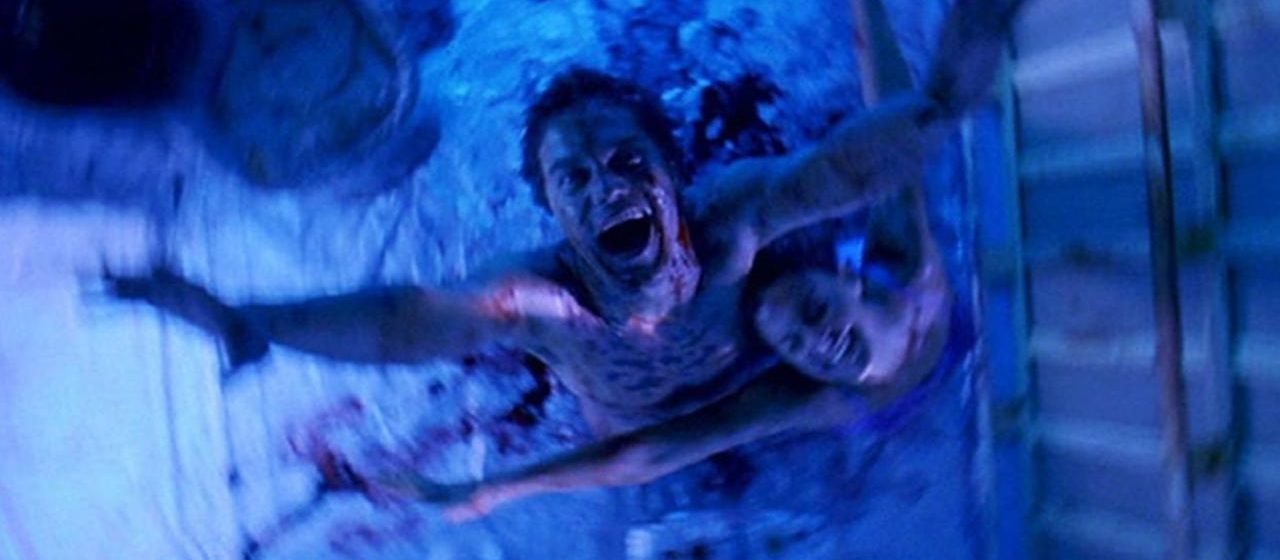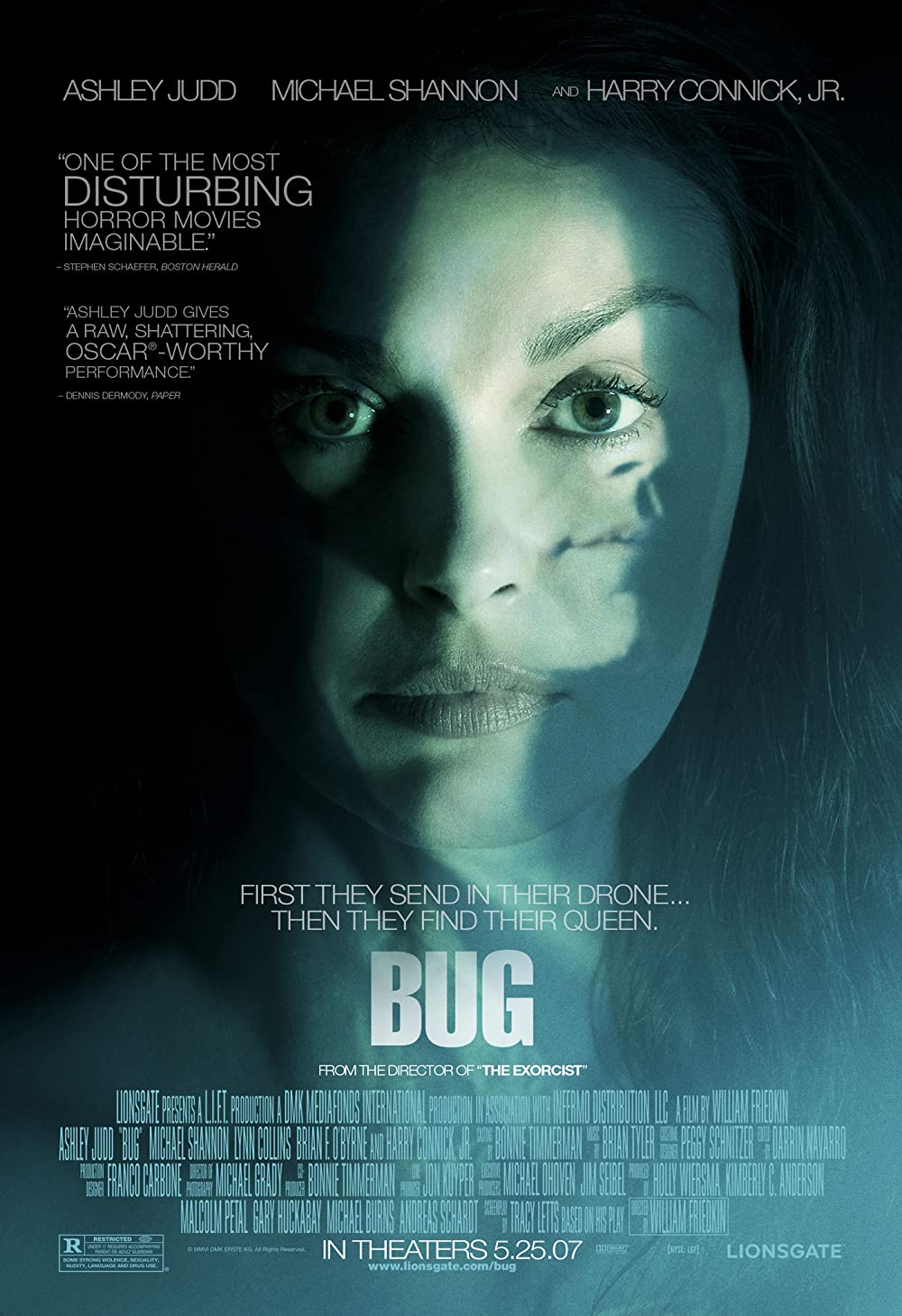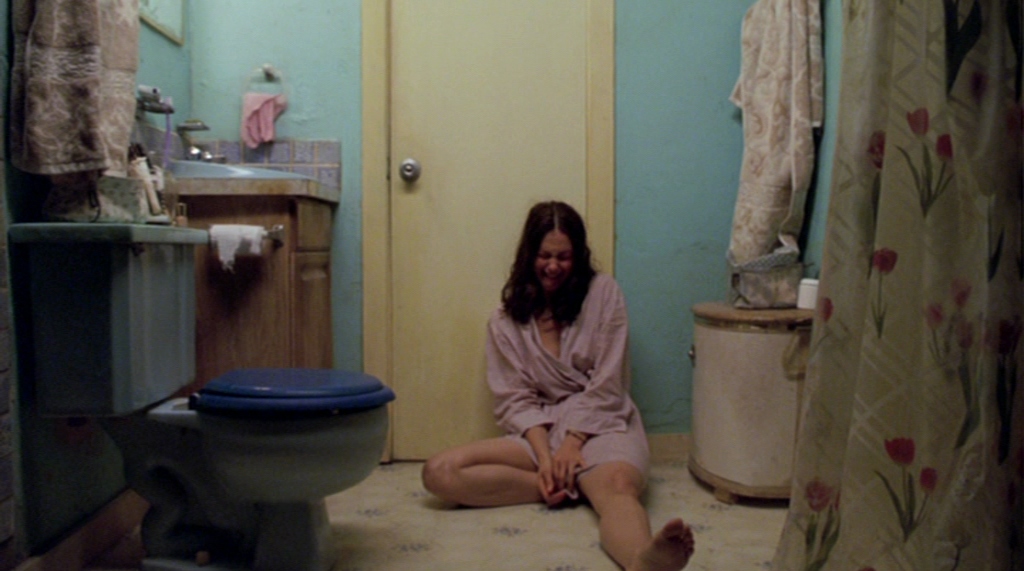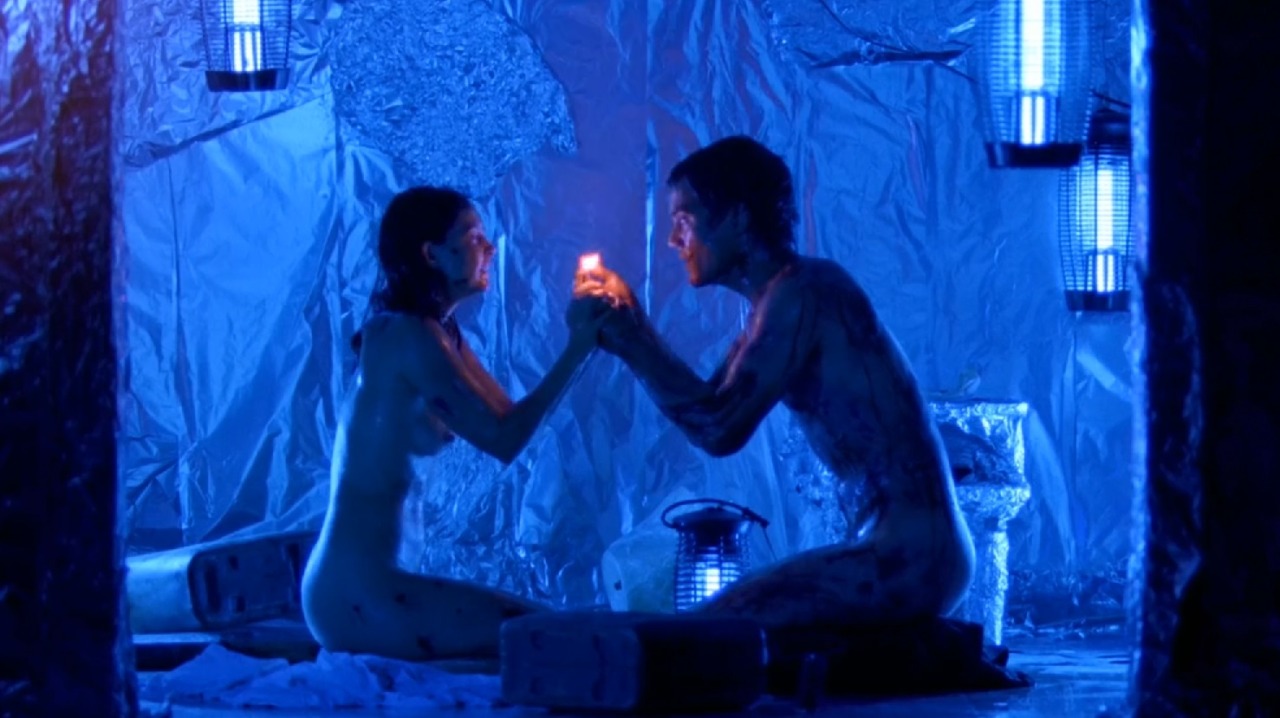

“You’re never really safe. One time, maybe, a long time ago people were safe. But that’s all over. Not anymore. Not on this planet. We’ll never really be safe again. We can’t be, not with all the technology, the chemicals, the information. In bed at night, sometimes you can feel it. All the machines, the works… humming.”
William Friedkin’s Bug is among the most intense and frightening cinematic experiences I’ve ever subjected myself to. From its opening scenes, in which two down-and-out loners kickstart a peculiar star-crossed romance, it sets about gradually building a grim tension. As the affair escalates and Peter’s (Michael Shannon) radical ideas begin to inform the thoughts of Agnes (Ashley Judd), the pair succumb to a shared madness, a folie à deux that explodes into a feverish nightmare in the final act. Based on Tracy Letts’ play and adapted by the playwright/actor himself, Friedkin’s film takes place almost entirely within the confines of a seedy Oklahoma motel room.
In most cases the translation of plays from the stage to the screen have a lingering sense of compromise baked in, certain contrivances necessary to accommodate the constraints of the stage but awkward on celluloid. But the drama here is entirely psychological. Consequently, the limits of the motel room are more than adequate, maybe even preferred because what is happening outside of those four walls simply doesn’t matter. In focusing in rather than expanding, the success of the film’s wicked culmination, and thus the project as a whole, ultimately rests on the shoulders of its two stars and a director who bravely launches into the freakout finale with abandon; without regard for those who will be flabbergasted and likely put off by the ascent into motor-mouthed insanity.
Taken at face value, Bug is, at minimum, an engrossing tale of psychosis and manipulation. Agnes is a divorcee, a waitress living out of a fleabag motel. She lost her son—literally lost track of his whereabouts in a supermarket—nearly ten years ago and seemingly cannot move on with her life. A decade has passed and yet she’s stuck in a rut of drugs and alcohol, a depraved lifestyle that is supported and participated in by her only friend, R.C. (Lynn Collins). In the midst of a series of ominous phone calls, from which she intuits that her abusive ex-husband Jerry (a hunky Harry Conick, Jr.) has been paroled, she is introduced to Peter, an awkward drifter and recently discharged soldier. Their mutual loneliness attracts them to one another, and when Jerry rudely barges back into Agnes’ life and Peter fends him off, their friendship turns romantic, their internal lives now inextricably bound up together.
After consummating their relationship for the first time, Peter breaks out in a rash. He believes it’s the result of a bug infestation but Agnes cannot see the microscopic specimen that Peter presents to her on his thumb. Peter reveals that he was the subject of experimental testing during his time in the military, and believes that aphid eggs were planted inside of his body as part of the experiment and that they now feed off of his blood. His paranoia gives way to insanity, and though Agnes does not initially see the bugs, her desperate attachment to Peter compels her to descend into madness alongside him.

The film provides excellent suspense whether one “believes” in the bugs or not (conveniently, even if they are real, they’re so tiny that Friedkin never has to show them on screen). Both options provide their own disturbing conclusions. If Peter’s conspiracies are legitimate—if the government implanted bugs beneath his skin, if Dr. Sweet (Brían F. O’Byrne) is not the representative of a mental hospital but a sinister robot controlled by the government, if the disappearance of Agnes’s son was not an accident, if their cohabitation was planned, if the Bilderberg Group is manipulating the world, if the government is implanting microchips in everyone’s bodies, if the Americium-241 in smoke detectors is actually meant to harm people, if there are bugs living in his molars—then the horrifying descent into madness is a gripping mystery that increases in intensity until exploding in its incendiary final act. Call Peter’s bluff, though, and the drama that unfolds before us is simply heartbreaking, as two lost and broken souls find one another, briefly taste the sweetness of love, and then destroy themselves. Several hints, including Agnes’s shocked dismay when Peter commits to their final course of action, suggest the latter interpretation is correct, which would indicate she favored dying with someone who cared for her over continuing a life of solitude. Still other clues favor the former interpretation—and if one goes that way, there’s a whole slew of additional questions about what is real and what is delusion.

In either case, Agnes’s susceptibility to Peter’s manipulations and their rapid escalation from conspiracy-minded radicals to dangerous threats to themselves and others over the course of a few days is disturbing. Friedkin and Letts do not sugarcoat the proceedings at all, depicting a harrowing slide into self-harm, worrisome mental gymnastics, and gibberish articulations of fractured states of mind. Nearly all facets of Friedkin’s workmanship on Bug are masterful. From his hovering camera that elicits the sense of paranoia his characters are experiencing; to the erratic and discombobulating editing that never settles into a pleasant rhythm; to the eerie sound design that makes use of the whir of helicopter blades and ceiling fans, the cricket-like chirp of a smoke alarm, the ringing of a telephone; to even the set design, which is simple and gritty but transformed into a tinfoil dungeon for the final act—in nearly every case, his decisions prove creatively inspired, reinforce the paranoid tone, and maintain the balance of ambiguity.
As masterful as Friedkin’s work may be, as I stated earlier, he ultimately relies on his stars to carry the film. Frankly, I was swept away by Judd and Shannon. Judd makes Agnes’s despondence and apathy palpable, and the spark of personal connection with Peter seems so genuine that we never criticize her for following his lead. Judd’s raw and terrified performance is matched by the equally committed work of Shannon, who had starred in the original run of the play and reprised his role several times since its debut in 1996. The supercharged mania that the two cooperatively build to in the last scene is a singularly intense experience.
It’s worth bearing in mind that Friedkin was in a major slump when he made Bug. He could have retired or continued coasting. Instead, he triumphantly returned to the horror genre by making a relentlessly disturbing document of mental anguish and paranoia.